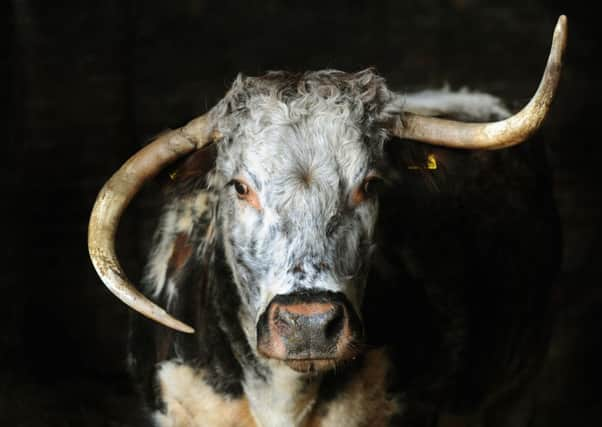Huby family play their part in Longhorn revival


Most may pass this off as one of those things and that times and fashion have moved on, particularly with the continental revolution that saw Limousin, Charolais, Simmental and others sweep into the UK in the 70s and 80s, but the past decade has seen the Longhorn, perhaps England’s most distinctive native breed due to its horns, see a major upturn in fortunes.
The Longhorn may be a long way from reclaiming its past glories as the country’s leading cattle breed but it is now listed as one of the RBST’s success stories making it three steps up from its previous status and no longer in danger of extinction.
Advertisement
Hide AdAdvertisement
Hide AdThe increasing number of farm shops and farmers’ markets is seen as partially responsible for this rise, through the marketing of well-marbled native beef, but it perhaps comes down to the breed having qualities that are still recognised as being commercially appropriate today.
The Walker family of Newton Farm in Huby, North Yorkshire, is one of many who have been part of this renaissance. They have a herd of 19 pedigree Longhorn cows and two bulls that they started with in 2005 after a brief spell with Dexter cattle. Graham Walker told of how their interest began.
“We have a commercial suckler herd that now runs to 55 crossbred cows that are basically a mix of everything.
“Within the slightly smaller herd ten years ago we had a crossbred Longhorn and we were impressed by its temperament. It started us off thinking about keeping the breed as a pedigree herd.
Advertisement
Hide AdAdvertisement
Hide Ad“We had Dexters at that time but we saw that there was a better market for Longhorns. The steers, all dehorned, sell well alongside the continentals at Thirsk market with no real difference in price. We sold one before Christmas that had just been weaned for £650 and any females we don’t want ourselves also sell well at the pedigree sales.
“They’re very easy to manage and the cows are great mothers. All of our cows whether crossbreds or Longhorn have very little stress and that leads to them having long lives. We get attached to them. We have a Charolais X that’s 20-years-old and has a calf at foot and several that are around 17 years. The oldest Longhorn cow we have is 13.”
Graham and his friend Robert Mothersill, who helps out on the farm, have become successful performers at agricultural shows.
“We attended five shows last year starting at Newark and took three breed championships and one reserve. It’s all about getting people to see what you produce and that way your stock sells better in the long run.
Advertisement
Hide AdAdvertisement
Hide Ad“Our bull Stoke Juniper was champion at Northumberland County Show and Tetford Mistletoe, one of our cows, was Longhorn champion at both Cheshire County and Ryedale. She also took the Reserve title at Aldborough & Boroughbridge Show where she was in the Any Other Native Breeds class.”
Graham’s most memorable moment in the show ring came at the Great Yorkshire Show in 2009 when one of the family’s homebred bulls Newton Storm took the breed championship.
“It all depends on the judge on the day. The important thing is that your breed must be true to type and have a good frame. There’s certainly more competition too. There are now something along the lines of 7,000 females registered in the UK.”
The Walkers have established a fine reputation during that time regardless of the competition. In the recent Longhorn Northern Area Herd contest the Newton herd was placed third in the large herd category with Stoke Juniper named champion senior bull and Tetford Mistletoe sixth in the senior cow section.
Advertisement
Hide AdAdvertisement
Hide AdNewton Farm runs to just under 300 acres and is a mix of grassland, wheat, barley, fodder maize and fodder beet with the commercial suckler herd and the Longhorn herd running side by side. The partners in the farm are Graham’s father David, David’s sister Sylvia, and her son Andrew.